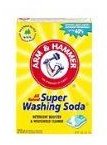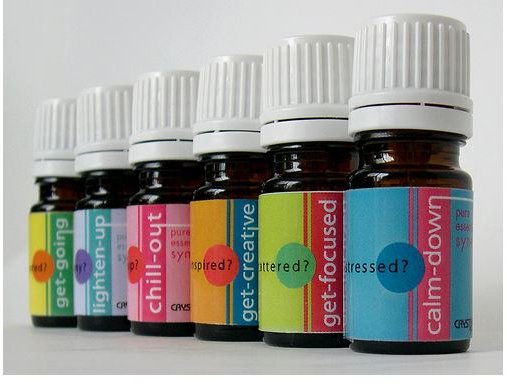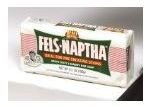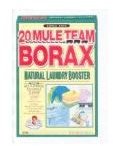Homemade Laundry Soap Recipe: Save Money & Get Clothes Clean with Our Quick & Easy 3-Ingredient Recipe
Control What Goes into Your Laundry Detergent
Commercial detergents aren’t required to list their ingredients. It’s a complete mystery what they exactly contain. Labels are cryptic and uninformative. For instance, Tide’s label says it contains “Biodegradable surfactants (anionic and nonionic) and enzymes.” All laundry detergents contain surfactants, which is basically another name for soap. Surfactants used in soaps and detergents are molecules that interact with water at one end and with oils at the other, which allows them to both attract and “lift” away dirt and oil in water.
The “enzymes” in the short commercial soap list refer to stain-targeted compounds, such as enzymes that break down starches or enzymes that break down protein-based stains.
While the vast majority of laundry detergent manufacturers have eliminated phosphates from their formulas, they do still make use of compounds that may have an adverse effect on the environment or release compounds into the air or water that may be dangerous to humans or animals. These include petroleum-based fragrances and surfactants that form carcinogens in the atmosphere or release toxins like formaldehyde.
When you make your own laundry detergent, you know what goes into it. You select the ingredients and you select the scent, if any. For instance, one ingredient in our recommended homemade laundry soap recipe, below, is Ivory or Fels-Naptha soap. If you decide to use Fels-Naptha, it’s easy to look up its compounds and learn that it contains terpene hydrocarbons, which may cause eye or skin irritation in direct contact but isn’t considered hazardous.
Know That Your Laundry Soap is Allergy and Asthma Safe

People who suffer from allergies or asthma are often sensitive to detergent residues or the very strong fragrances often used, developing hives, an itchy rash, or respiratory symptoms. While it may sound attractive when a detergent ad crows that it “whitens and brightens without bleach,” this is actually because the detergent is leaving behind a residue that makes the material reflect light differently and appear brighter.
Making your own laundry soap gives you the power to ensure that no allergenic ingredients go in. You’re in charge of choosing whatever you like, and there are many cleaning agents that work wonderfully and are easy to find and use.
Make Your Laundry Smell the Way You Choose

When you use homemade laundry detergent recipes, you’re in charge of the scent. Want to go scent-free? You’re already there! Want your laundry to smell citrus-fresh? Add a few drops of sweet orange essential oil to the mix. In fact, you are free to make your laundry soap smell however you like — essential oils, available at hobby stores and elsewhere, are the way to go.
In fact, it would be a snap to mix up two or more “varieties” or scents of laundry soap, because our recipe makes enough for 32 loads and fits in a standard 4-cup food storage container. You can mix up two batches at once and have a warm, light scent for whites and lingerie and an outdoorsy scent for jeans and work shirts, if you’re into that sort of thing. When you use your own homemade laundry soap recipe, you’re limited only by your imagination.
Save Money Making Your Own Laundry Detergent

If you purchase your homemade detergent ingredients at a local store (they’re often twice as much or more online) you’ll save money. A 55-ounce box of washing soda costs about $3. A 76-ounce box of borax costs about $4. And a bar of Fels-Naptha or other mild soap shouldn’t run more than $1.50.
At the amounts used of these products, we calculate, very roughly, that using this homemade laundry soap costs about $0.07, or seven cents, per load — and that’s calculating at the high end. Your results may be even cheaper!
5-Minute Powder Laundry Detergent Recipe
There is a way to make this recipe in liquid form, but why bother? The soap flakes dissolve eventually even in cold water — we’ve had no experience with soap flake residue on clothes, and found no reports of it either. Liquid homemade soaps are messy, gloopy, and space-consuming. Mix up this powder homemade laundry soap recipe instead. It’s convenient to store and use, and gets clothes clean.
Ingredients:
1 cup washing soda
1 cup Borax
2 cups mild, neutral bar soap like Ivory, Zote or Fels-Naptha, finely grated
2–3 drops of essential oil, optional
The two cups of grated soap is equivalent to one bar of Ivory or part of a bar of Fels-Naptha. Use a microplane or other fine grater for best results. The soap can be grated in about five minutes.
Mix together the one cup washing soda, one cup borax, and two cups grated soap (and essential oil, if using) in a container with a tight-fitting lid.
Use: two tablespoons per load of laundry.
- Note that this, like other homemade laundry detergent recipes, will not suds up. Don’t worry — suds are mostly cosmetic and are put in for our benefit. The soap will clean your clothes.
- Washing soda, Borax and Fels-Naptha soap are all available in your supermarket’s laundry aisle. Really. I know you’ve never seen them before, but that’s because you’ve never known to look. They are there!
Give this a try, and let us know how it works for you. Even better, let us know how much you save!
References
Binghamton University, www.binghamton.edu
The Laundry Alternative, Inc., www.laundry-alternative.com"
Fels-Naptha Materials Safety Data Sheet, whatinproducts.com
What are enzymes and why do we use them in laundry detergents?, www.scienceinthebox.com
Image credits:
- Amazon.com promotional product shot
- Amazon.com promotional product shot
- Crystalwood Naturals, https://www.flickr.com/photos/crystalwood/2531476197/
- Amazon.com promotional product shot
